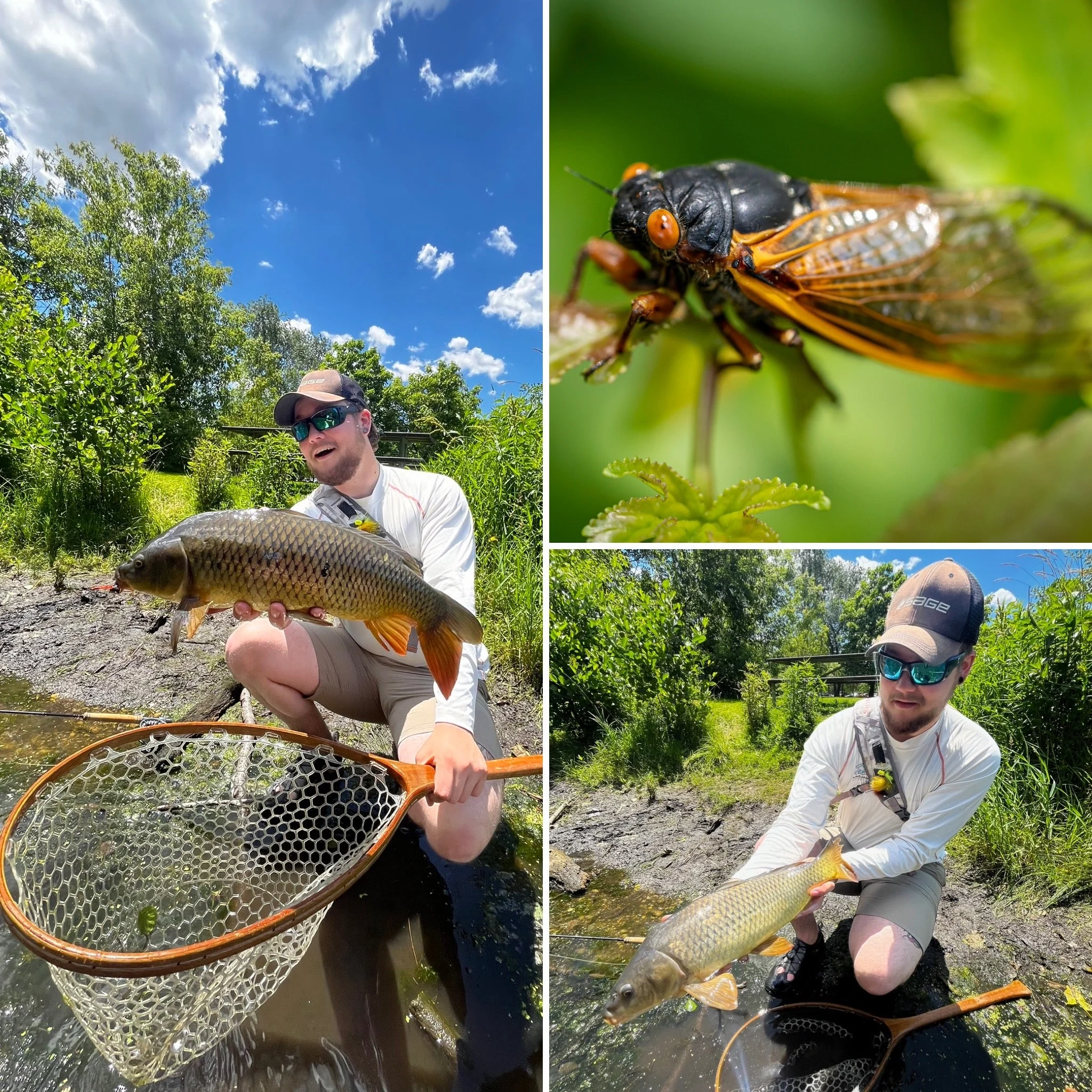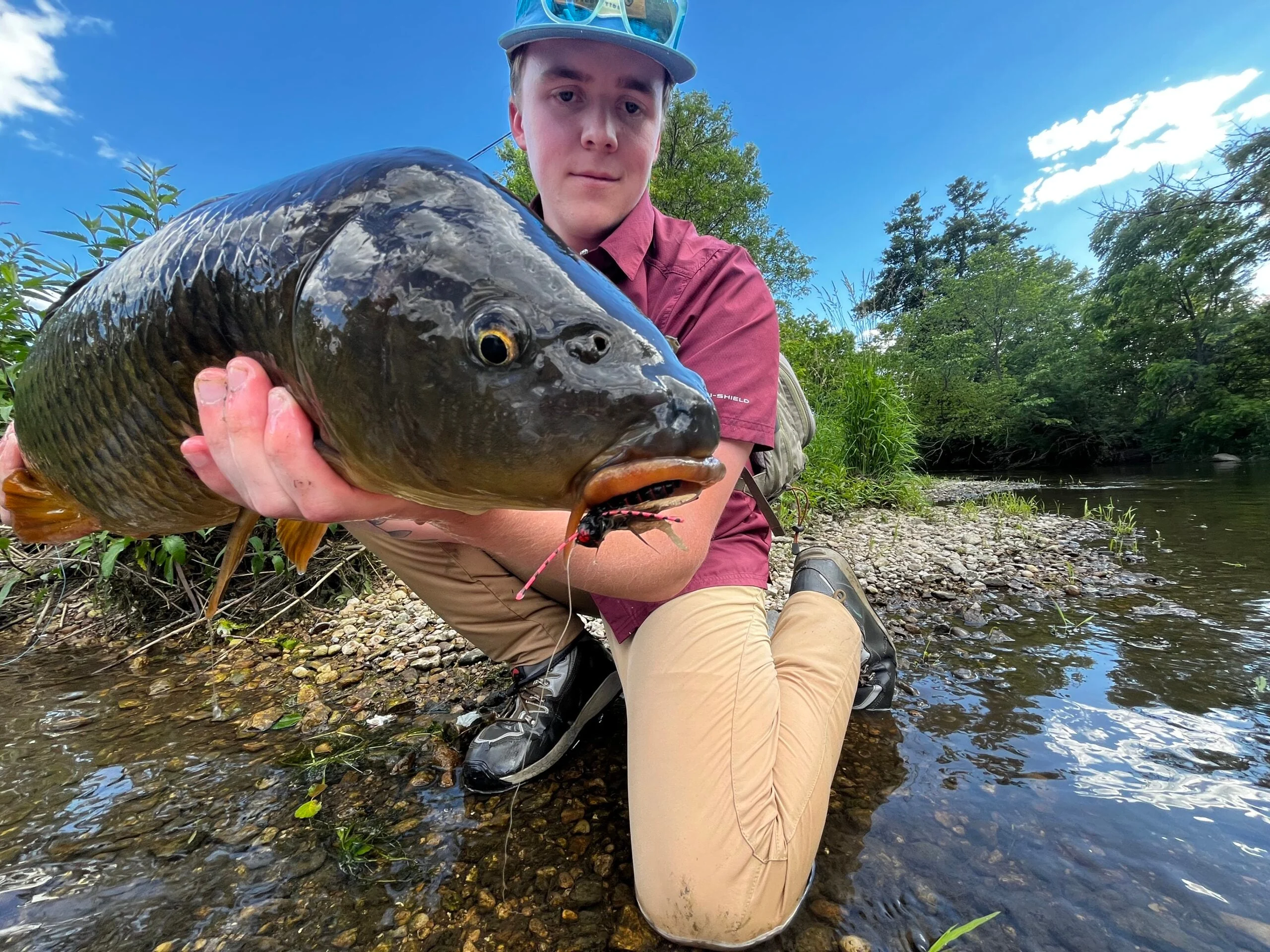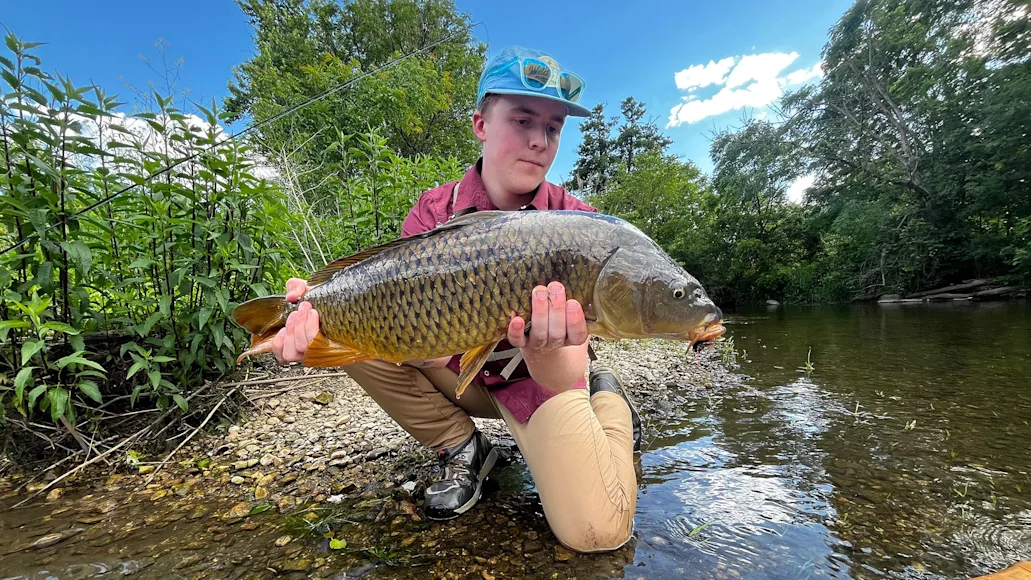The historic 2024 co-emergence of two cicada broods
is coming to an end. The Great Northern Illinois Brood, a.k.a. Brood XIII, reached peak emergence
nearly two weeks ago, and the number of bugs in the air has been declining steadily since. The good news is that fish—smallmouth bass and carp
—in the Midwest are still dialed in on cicadas and should be for a little while longer. So, while the bugs may have stopped hatching, the fish continue to look up for giant cicadas on the surface.
This week, we spoke with Jayden Daniel of Chicago Fly Fishing Outfitters
and guide Mike Allen of Midwest Waters Angling Co
. about what they’ve been seeing on the water. Both reports confirmed fewer bugs in the air, but aggressive fish activity. And while the co-emergence is nearing its end, Illinois’ annual cicada hatch will begin popping off soon. That means the year of cicadas isn’t over just yet. Here are some tips, tactics, and strategies for late-season cicada fishing.

Clockwise from top right: A 17-year cicada sits on a leaf; fly-shop worker Jayden Daniel releases a carp; Daniel admires a carp caught on a cicada fly. Jayden Daniel/Gary Riegel
Field Report: The Brood XIII Hatch is Slowing Down
June has been an incredible month for cicada fishing in Northeast Illinois. The emergence lived up to its billing and fish have been gorging themselves on these bugs. As expected, the hatch is finally slowing down, and fewer bugs are in the air. “I’ve guided three different rivers in the last couple of days, and most of the cicada activity has died off considerably,” says Northern Illinois fishing guide Mike Allen. “Even though the actual bug activity has slowed, the fish are still looking for that food source. For how long they do this is the million dollar question.”
Earlier this year, I spoke with cicada fishing expert Dave Zielinski, who said, “Fish will eat cicadas for weeks after they’re gone because they’re used to seeing them in the water.” So far, this seems to be the case in Illinois, but as Allen said, it’s hard to tell how long fish will continue to take cicada patterns. In the meantime, if you live in the Upper Midwest, get out on the water and fish cicada flies and lures even if you don’t see bugs in the air. The fish are still looking for them in the water.
Anglers in the Chicago area are also seeing fewer bugs, but similar to the north, it hasn’t slowed down the carp and bass fishing. Jayden Daniel, a shop hand at Chicago Fly Fishing Outfitters
, has been targeting river carp in slow water. “I’ve been fishing the DuPage River and looking for slow, swirling back eddies,” says Daniel. “Fish are still cruising around looking for bugs, but we’ve had our best success with small packs of carp.” Daniel explains that the singles will still eat cicada flies, but schools of fish create competition and produce better strikes. He expects fish to continue to eat cicadas for at least another week.

Big carp are still eating cicada flies in Northeast Illinois. Jayden Daniel
Start Switching Your Attention to Seasonal Cicadas
While the 221-year cicada emergence is nearly over, anglers in Northern Illinois don’t have to wait long before another cicada hatch. Like other areas of the country, Northern Illinois gets an annual cicada emergence. These bugs are larger and feature a white and green coloration compared to the smaller black and orange 17-year periodical cicadas.
“We usually start to see our annual cicadas sometime in July,” says Daniel. “I’m interested to see how the fish react to the annual cicadas in a month or so, but either way, more bugs are coming.” These annual cicadas are also known as the “dog days cicadas” because they emerge when ground temperatures are much warmer compared to the periodicals, which hatch at 64 degrees. Either way, more and bigger cicadas are on the way for Illinois anglers.
So don’t put the rod down just yet. Keep fishing patterns and lures that imitate the 17-year cicadas until fish refuse your flies and lures. Then wait a few more weeks for the summer cicadas to get going. That should keep you plenty busy until fall.


